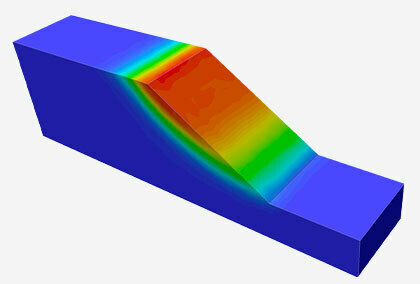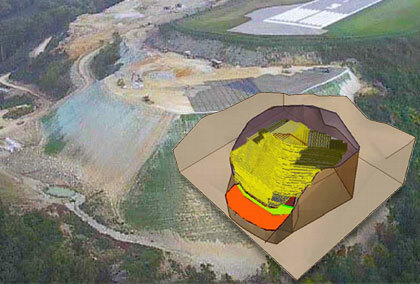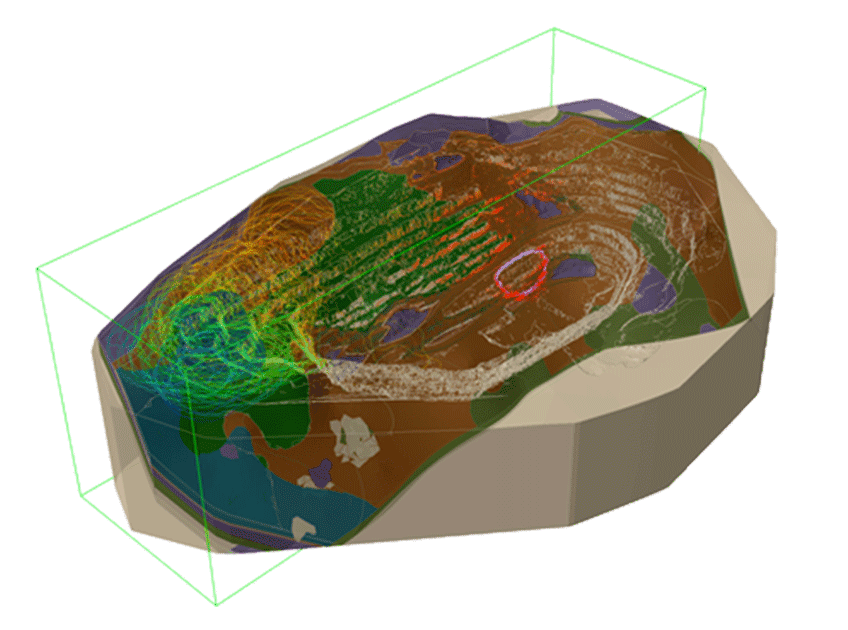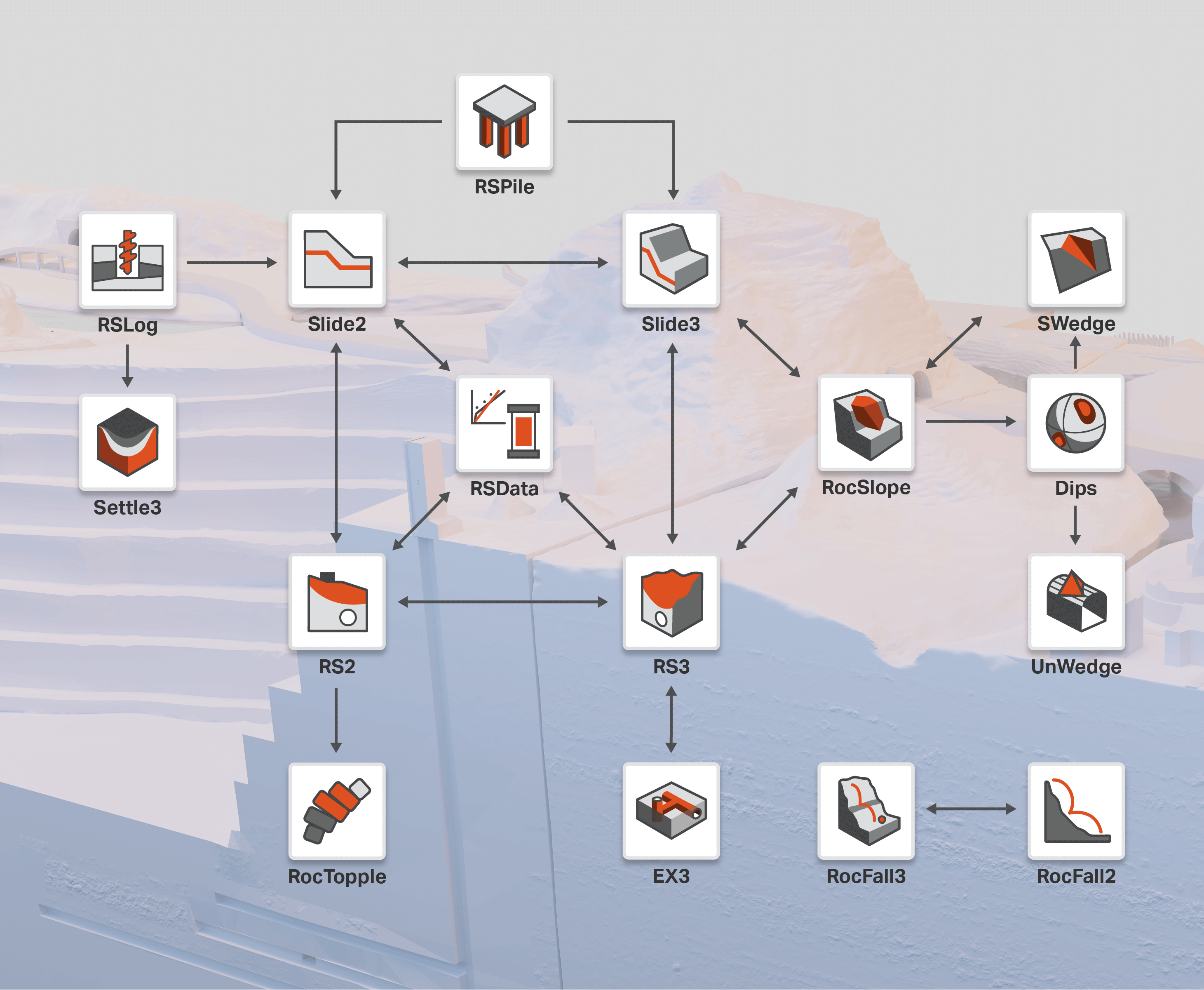Simulating Multi-Modal Failure in Open Pit Mines Using LEM & FEM
This article is based on a paper written by Javankhoshdel, S., Cami, B., Yacoub, T., Ma, T. and Abolfazlzadeh, Y.
Introduction
The Finite Element Method (FEM) and Limit Equilibrium Method (LEM) are known as the two most conventional methods for slope stability analysis. The traditional LEM slope stability analysis program is useful for identifying the most critical failure surface. However, when considering real-world problems, it’s important to acknowledge multiple failure surfaces.
This study brings to light a special method known as the locally informed particle swarm with radius (LIPS-R), a multi-modal optimization algorithm. To articulate how this method results in multiple failure modes, an open-pit mine with distinctive material layers is simulated in this study to compare the findings of LEM and FEM analysis. The results establish a strong approval for using both techniques.
In this paper, the analysis was performed to examine the lowest factor of safety and probable critical slip surfaces using RS3 and Slide3 software and the results are compared.
The Shear Strength Reduction (SSR) Method
The SSR method for slope stability consists of finite element analysis to identify the stress reduction factor (SRF) or FS value that results in slope failure. The SRF is used for compressing the shear strengths of the materials present in a FEM model of a slope. Further, the traditional FEM analysis was initiated before reaching a critical SRF value that causes instability.
Overview of the Multi-Modal Optimization (MMO) Method
Real-world slope stability problems require a combination of unimodal and multimodal metaheuristic search methods. A unimodal method such as particle swarm optimization (PSO), seeks out the single most critical global minimum surface. Locally informed particle swarm with radius (LIPS-R), a multimodal method, discovers the x most critical minima surfaces (e.g. x may be 3). Multi-Modal Optimization (MMO) has been implemented in Slide3.
Unveiling The Open Pit Model
The 3D model highlighted in this paper consists of two materials. Yellow being the weaker region, chances are that failure surfaces are present in this terrain.
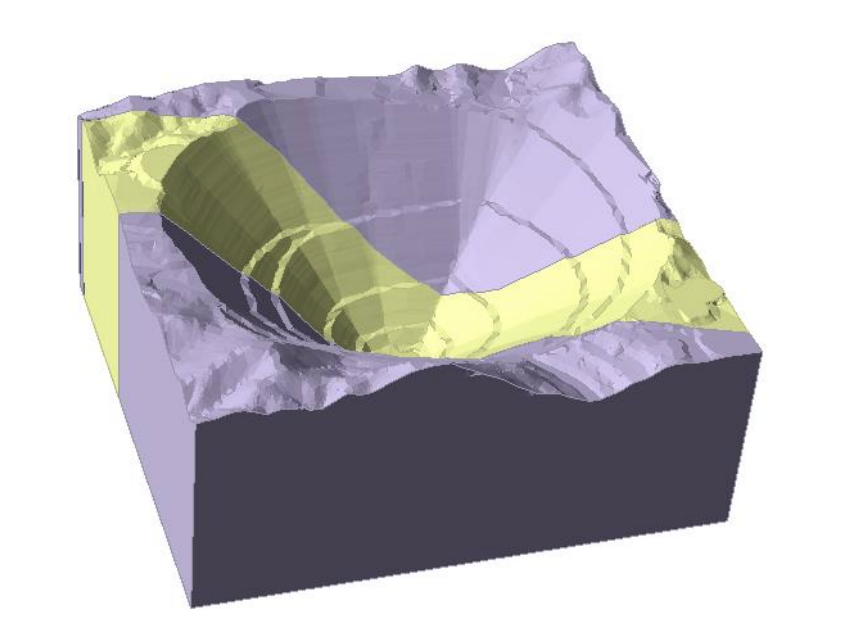
Figure 1 shows the properties of material 1 in purple that uses that Generalized Hoek Brown failure criterion and the weaker material 2 in yellow depicts Mohr Coulomb failure criterion.

Material 1. Generalized Hoek Brown Material 1. Generalized Hoek Brown
Results of the LEM Analysis using MMO Method
Figure 2 highlights the outcomes of the LEM analysis implementing the MMO method. This approach discovered three minima with FS values of 0.99, 1.0, and 1.14. Although the FS values are very similar, it is evident that the surfaces are different in size, shape, and even location on the pit. This explains the advantage of MMO; by focusing on only the global minimum (lowest FS), two other potential failures could have been missed.
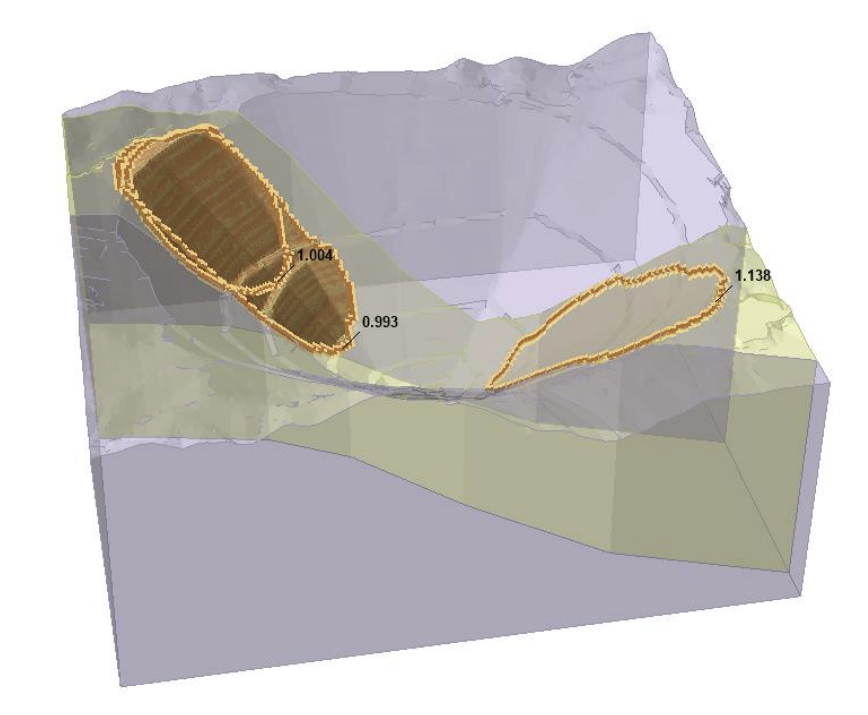
FEM SSR Analysis Result
Results obtained from the FEM SSR analysis show a good agreement with the FS values computed using the LEM approach. Figure 3 (a) shows that the two failure regions found in the SSR analysis are similar to those found in MMO with minimum FS values. Further, in Figure 3 (b) during FEM analysis when the focus of the research was on the other side of the model (where the LEM value was FS = 1.14,) identical FS and failure surface were discovered.
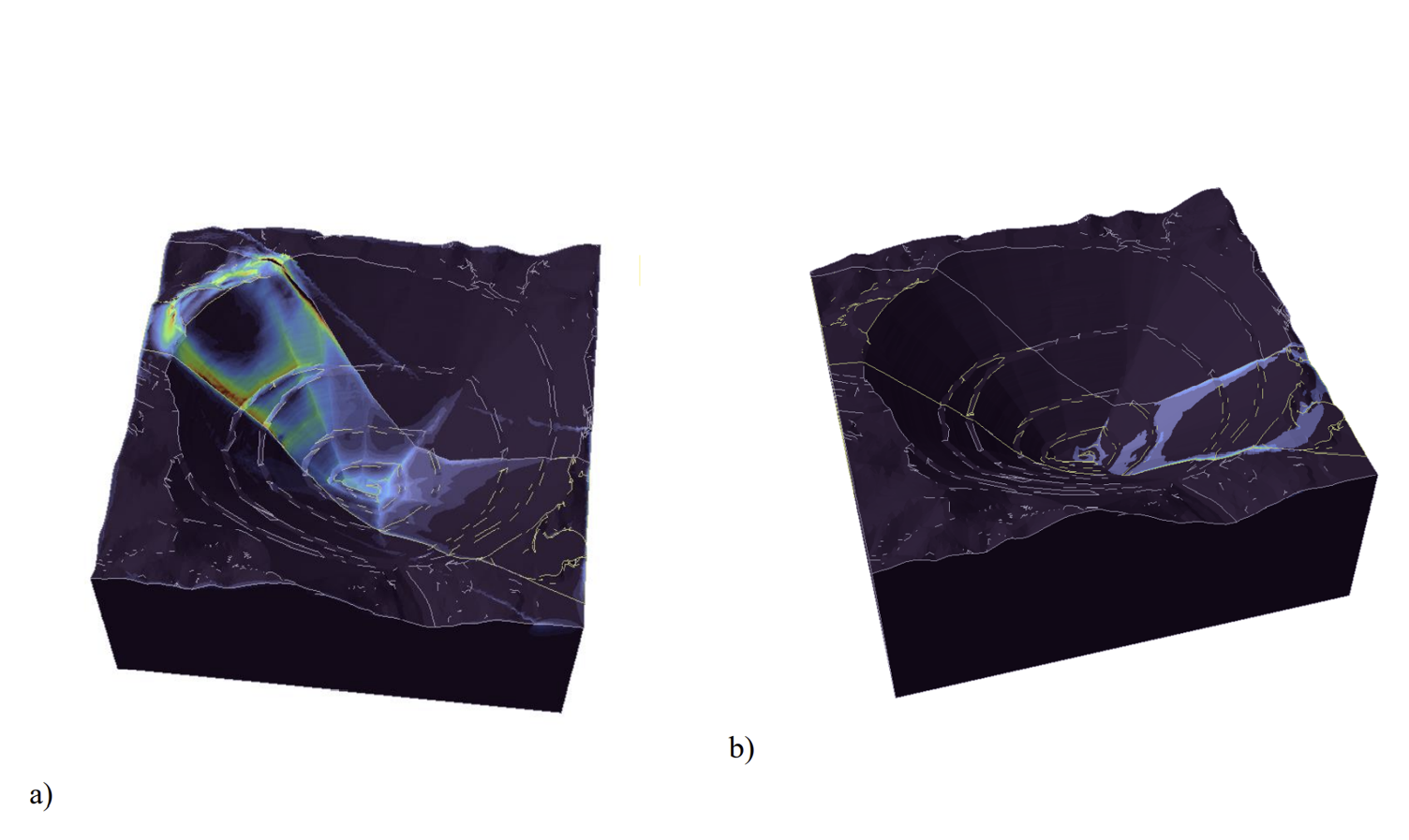
Fig. 3. (a) focuses on the entire geometry of the surface whereas Fig. 3 (b) has one specific focus region outlined. Maximum shear strain contour for the FEM analysis focusing on a) the entire geometry SRF = 1.03b) the side with the LEM of FS = 1.14 and with SRF = 1.13.
Conclusion
Focusing on 3D slope stability analysis of an open-pit mine using both the LEM and FEM techniques, this study concluded that both the SSR and MMO analyses found identical regions for the critical slip surface and similar FS values.
When it comes to investigating the failure surfaces of your projects, Rocscience RS3 software in conjunction with Slide3 makes it possible for you to efficiently conduct both FEM and LEM analysis using the same 3D model and verify your FS results, so you can be confident in your results.
